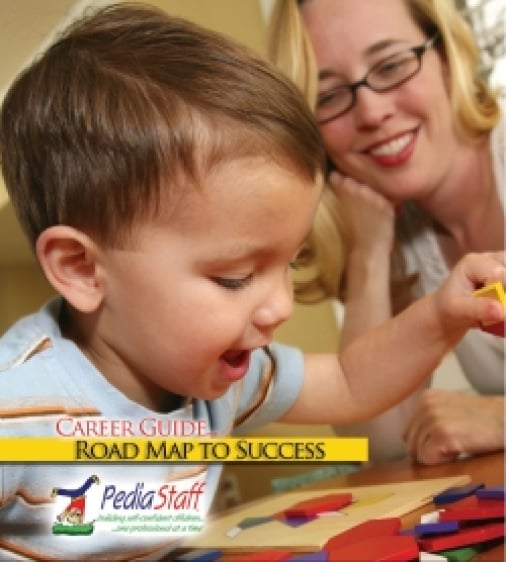Q&A: Switch Skills – Advancing to the Next Level
By: Mishelle Rudzinski, SLP and AT Specialist
Some children with limited motor skills use switches to access toys, communication, and/or the computer. Unfortunately, sometimes children who can benefit from more complex switch activities get stuck at the cause-effect level. They can hit a switch to make something happen, but they don’t necessarily advance beyond that stage to using the switch for more complex communication or computer access. Following are some ideas for helping children advance their switch skills:
When are switches appropriate?
Switch activities are appropriate for any child with limited physical abilities who needs assistance communicating, playing with toys, or accessing the computer. There are many different types of switches and they can be activated with any part of the body. The trick is to find the child’s most reliable form of responding and use that for switch access. An occupational or physical therapist with experience assessing kids with switches should be consulted to find the best switch and best access method for the child.
What’s the best way to cue children when they are learning to use switches?
Ideally, a child should be set up with the correct switch in the correct placement with a fun activity. The activity itself should be the cue so little to no verbal cuing should be required by an adult. For example, program a single message communication switch to say “blow it up” and look expectantly at the child with a balloon poised to be blown up. No other cueing should be needed.
Isn’t it better to cue by saying “hit the switch?”
The adult may have to wait quite a long time for the child to say the message, but it’s better for the child to be the initiator than the responder. Additionally, by saying “hit the switch,” the adult is drawing attention to the switch (just the means to an end) rather than the activity (which is hopefully a very motivating end).
How about using “hand over hand” assistance when a child is slow to activate the switch?
Using hand over hand to help a child activate a switch actually accomplishes very little. When someone guides a child’s hand, the child is a passive participator. When the child figures out how to plan and execute the motor skills necessary for activating the switch he uses a different part of his brain, the part of the brain he will need to use every time he plans and executes that movement.
Why do some kids get stuck at the cause-effect level of switch use?
Lots of reasons:
- Not enough practice. Children should have plenty of opportunities to use switches so that the act of accessing the switches is second nature and automatic.
- Activities that are not motivating enough. Find the things that motivate each child and try to incorporate switches into those activities. Does the child like art? Attach a marker to a switch-activated stuffed animal and let the child draw by activating a switch that makes the animal move the marker around on a large piece of paper. Does the child like music? Let the child be the DJ. When the child turns on the music everyone can dance. When the child turns off the music, everyone can freeze.
- Too much time spent on basic activities. A child can advance by participating in activities that require timing with one switch or interaction between two switches. For example, one switch might activate a bubble blowing machine and another switch might activate a fan to blow the bubbles around the room.
- No plan for advancement. Too often the adults in the child’s life have not given enough careful consideration to a plan for advancement, incorporating the small, sequential steps that are needed to meet a long term goal of sophisticated communication and/or computer access.
How can I help a child move beyond cause-effect switch use?
- Provide lots of opportunities for more complex switch use: activities that require timing, turn-taking, or the use of two switches together.
- Make the activities very fun and motivating so that the child gets a “big bang for their buck.”
- Work with the child’s entire team so the child is working on the same skill across settings.
- Practice, practice, practice!
This Months Featured Author and Organization:Mishelle Rudinski of SwitchClimber.com
SwitchClimber.com is an interactive website for individuals with disabilities who are unable to use a standard computer mouse or touch screen. SwitchClimber.com has a variety of fun, flash-based activities that teach independent computer and communication device access by advancing switch users through sequential steps based on performance data.
Mishelle Rudzinski, the creator of SwitchClimber.com, is a speech-language pathologist and assistive technology specialist with over 20 years experience working with individuals with severe disabilities. Her specialty has been teaching computer and communication device access through a variety of methods, most notably two switch step scanning. During her years in the field of assistive technology, Mishelle noticed the need for additional resources for families and professionals to easily work together to systematically teach individuals the complex task of accessing the computer and communication devices. In June 2009, Mishelle left her job, sold her house, and moved across country so that she would have the resources to develop SwitchClimber.com.
PediaStaff is Hiring!
All JobsPediaStaff hires pediatric and school-based professionals nationwide for contract assignments of 2 to 12 months. We also help clinics, hospitals, schools, and home health agencies to find and hire these professionals directly. We work with Speech-Language Pathologists, Occupational and Physical Therapists, School Psychologists, and others in pediatric therapy and education.
